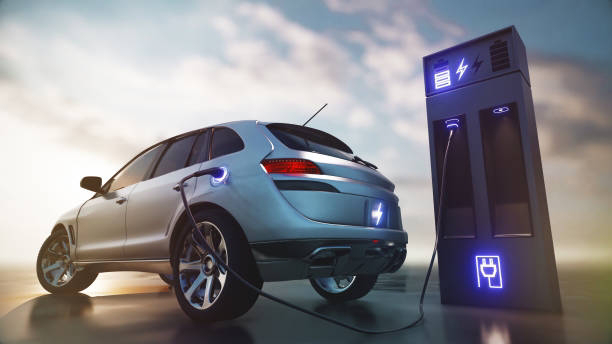The automotive industry is undergoing a transformative shift, driven largely by innovations in electric vehicle (EV) technology. With concerns over climate change, rising fuel costs, and government regulations promoting sustainability, electric vehicles have emerged as the future of transportation. In the last decade, EV technology has made significant leaps in battery advancements, autonomous driving, charging infrastructure, and vehicle design. These innovations are reshaping how we view personal and public transportation and promise to make driving more environmentally friendly and cost-effective.
The Rise of Electric Vehicles
The global transition towards electric mobility is undeniable. By 2030, it is projected that nearly 60% of all new car sales will be electric vehicles. This shift is supported by a number of factors, including:
1. Environmental Concerns: The reduction of greenhouse gas emissions and pollution is a major driver behind the rise of EVs.
2. Government Initiatives: Many countries have introduced policies offering subsidies, tax incentives, and rebates to encourage consumers to purchase electric vehicles.
3. Automotive Innovation: Continuous advancements in EV technology, battery efficiency, and vehicle design make EVs increasingly accessible to the average consumer.
Key Innovations Driving the Growth of Electric Vehicles
1. Battery Technology Advancements
The heart of any electric vehicle is its battery. Significant progress in battery technology has been one of the key drivers behind the rise of EVs. Innovations in lithium-ion batteries, which are lighter, more efficient, and more powerful, have made EVs more competitive with internal combustion engine vehicles. Key improvements include:
Energy Density: Higher energy density means that batteries can store more power in a smaller space, leading to extended driving ranges.
Faster Charging: New battery chemistries are reducing charging times, with the goal of providing a full charge in under 30 minutes.
Solid-State Batteries: This emerging technology offers the potential for even greater efficiency, faster charging, and increased safety compared to conventional lithium-ion batteries.
2. Vehicle Range and Performance
Early electric vehicles were often criticized for their limited range, but recent innovations have made it possible for some EVs to travel over 300 miles on a single charge. Companies like Tesla, Lucid Motors, and Rivian have introduced vehicles with long ranges, fast acceleration, and high performance, matching or even surpassing traditional gasoline-powered cars.
3. Autonomous Driving Technology
Electric vehicles are at the forefront of integrating autonomous driving technologies. Companies like Tesla, Waymo, and General Motors have made significant advancements in self-driving software, with EVs being the natural platform for these developments. Features like adaptive cruise control, lane assist, and full self-driving capabilities are being integrated into EVs, revolutionizing the way we think about car ownership and mobility.
4. Charging Infrastructure
One of the major hurdles for EV adoption has been the availability of charging infrastructure. However, innovations in charging technology and an expanding global network of charging stations are addressing this issue. Key developments include:
Fast-Charging Networks: Companies like Tesla and Electrify America have created networks of high-speed chargers, capable of recharging a vehicle in minutes.
Wireless Charging: Some automakers are exploring wireless charging pads that allow vehicles to charge simply by parking over a specialized pad, making charging as simple as parking.
Solar-Powered Chargers: The integration of solar panels into charging stations is helping reduce the overall carbon footprint of EV charging.
5. Vehicle-to-Grid (V2G) Technology
Electric vehicles can do more than just drive—they can also store and supply energy. Vehicle-to-grid (V2G) technology allows EVs to communicate with the electrical grid and provide power back to the grid during peak demand periods. This innovation could revolutionize energy storage and distribution, making EVs an integral part of the energy grid.
6. Sustainable Manufacturing and Recycling
As electric vehicles become more popular, automakers are focusing on making the entire lifecycle of an EV more sustainable. This includes the use of recycled materials in vehicle production and the development of more efficient battery recycling methods. Companies like Rivian and BMW are incorporating eco-friendly materials and processes in the manufacturing of their vehicles.
Challenges Facing Electric Vehicle Adoption
While the rise of EVs is impressive, challenges remain:
High Upfront Costs: Although the total cost of ownership is lower over time, the initial purchase price of an EV can be a deterrent for some buyers.
Range Anxiety: Despite advances in battery technology, concerns about the range of EVs persist, particularly in regions with limited charging infrastructure.
Infrastructure Development: Expanding the availability of charging stations, especially in rural areas, remains a significant challenge.
Battery Recycling: As more EVs hit the road, the need for efficient and environmentally-friendly battery recycling methods will become more pressing.
The Future of Electric Vehicles
The future of electric vehicles looks promising, with continued innovation expected in the coming years. Some key trends to watch for include:
Affordable EV Models: As battery costs decline, automakers will be able to produce more affordable electric vehicles, making them accessible to a broader market.
Enhanced Autonomous Capabilities: The integration of AI and machine learning will improve the autonomous driving capabilities of EVs, leading to safer and more efficient driving experiences.
Sustainability Initiatives: Automakers will continue to focus on sustainability, using renewable energy in manufacturing and improving the lifecycle of batteries through recycling and second-life applications.
Conclusion
The rise of electric vehicles is one of the most significant technological advancements of the 21st century. With innovations in battery technology, autonomous driving, and charging infrastructure, EVs are transforming the automotive landscape. As more consumers make the switch to electric, and as automakers continue to push the boundaries of innovation, the future of transportation looks to be electric, sustainable, and highly efficient.


